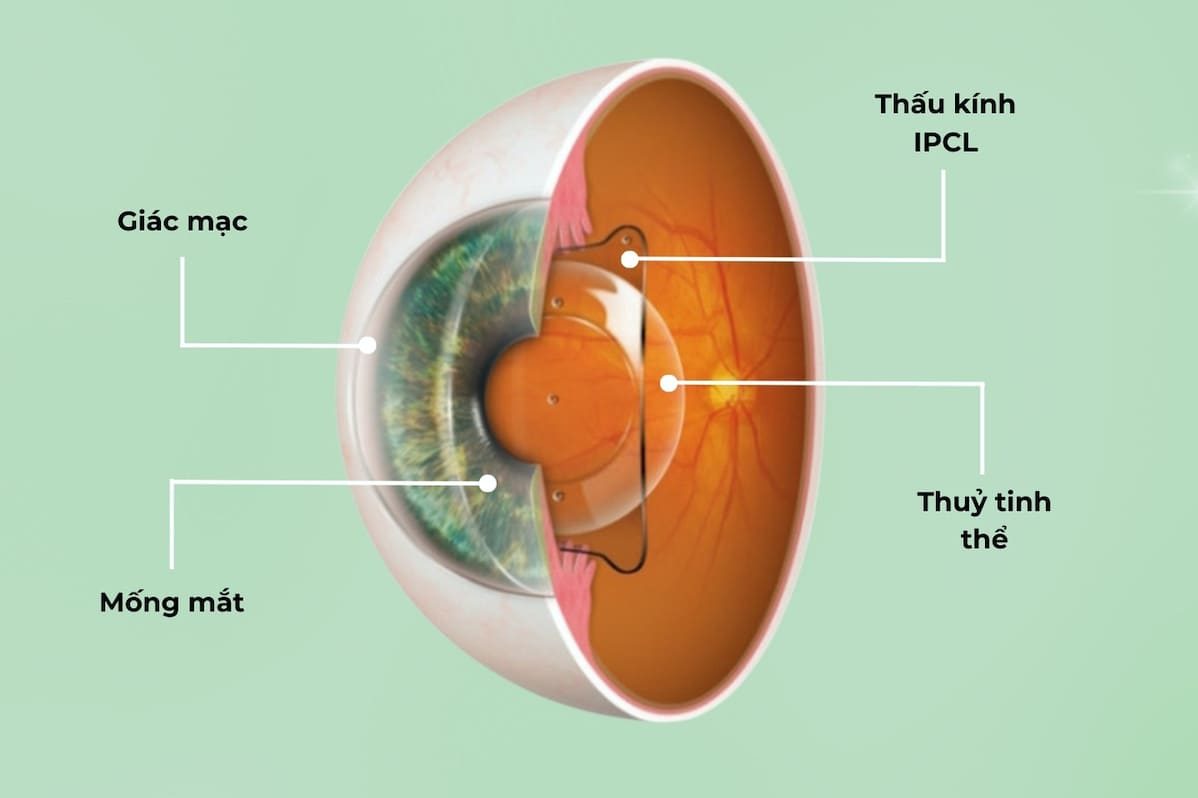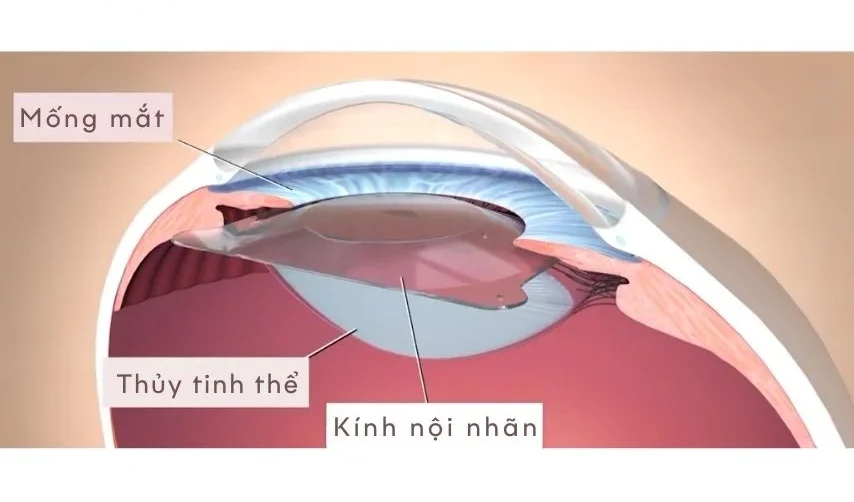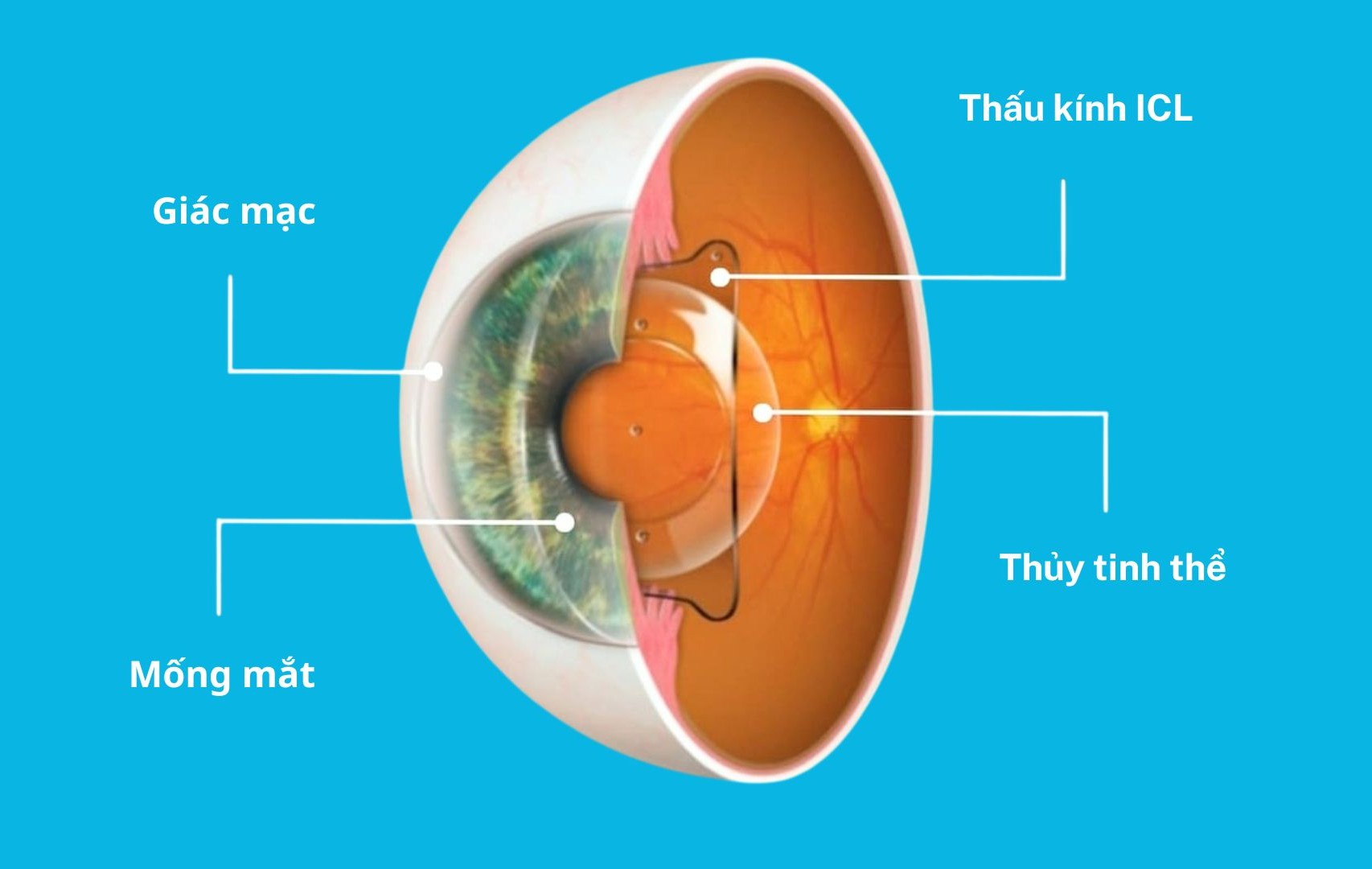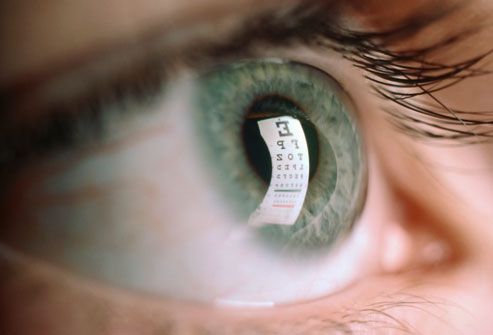Introduction

Biocompatible Collamer lens inside the eye
Phakic ICL is currently one of the most optimal solutions for people with high myopia, astigmatism, or hyperopia—especially in cases of thin corneas, dry eyes, or when LASIK/PRK are not suitable. In recent years, the use of Phakic ICL has increased strongly in developed countries such as Japan, South Korea, and the United States due to its superior visual outcomes, safety, and corneal preservation ability.
So what is the Phakic ICL method and what are its advantages and disadvantages? The article below will help you understand more before making a decision.
What is Phakic ICL?
Phakic ICL (Implantable Collamer Lens) is an intraocular lens implanted into the eye, positioned behind the iris and in front of the natural crystalline lens, which corrects refractive errors without cutting or ablating the cornea. Because it is “added into the eye,” this method is considered a vision-correcting technology that preserves ocular tissue, quite different from LASIK, PRK, or SMILE—techniques that use lasers to directly alter corneal tissue.
The ICL is made from Collamer®, a highly biocompatible material containing natural collagen, making it soft, stable, and safe for ocular tissue. The new-generation EVO/EVO+ ICL technology also features the KS-AquaPort central port design, which allows natural aqueous flow and eliminates the need for a preoperative iridectomy.
Who is suitable for Phakic ICL

Phakic ICL surgery is applied to people with myopia and astigmatism aged 18 and over.
According to official STAAR Surgical documentation:
- Myopia: –3.0D to –20.0D
- Astigmatism: 1.0D to 4.0D
- Age range: 21–45 years, with refractive stability ≥ 1 year
- Anterior chamber depth ≥ 3.0 mm, adequate endothelial cell count
- No ocular diseases such as glaucoma, keratitis, cataract, etc.
Particularly suitable for people who have:
- Thin corneas
- High myopia
- Dry eyes
- Unsuitability for LASIK/PRK/SMILE
Advantages of Phakic ICL surgery
Phakic ICL is rated as one of the safest and most effective modern technologies, with over 3 million lenses used worldwide and a clinical satisfaction rate up to 99.4%. Below are the highlighted advantages:
Sharp, stable, high-quality vision
ICL allows light to pass through the lens more cleanly, providing vision improvement almost immediately.
Studies show:
- 99% of Phakic ICL patients achieve visual acuity ≥ 20/40 within 6 months
- Better night vision compared with LASIK in many cases
The lens is custom-designed for each eye, optimizing visual quality day and night.
Complete corneal preservation

Studies show complication rates for Phakic ICL are generally very low
Unlike laser surgery, ICL does not cut the cornea, does not thin the corneal tissue, and does not disrupt the natural corneal structure. This ensures:
- Reduced risk of corneal ectasia
- Preserved ocular structural integrity
- Lower incidence of postoperative dry eye complications
Clinical evidence confirms Phakic ICL does not cause dry eye because it does not damage corneal nerves.
The procedure takes only 20–30 minutes, and patients can:
- See clearly immediately after surgery
- Return to normal activities within 1–2 days
- Avoid long recovery periods
FDA documents show ICL complication rates are very low, especially with central-port designs:
- Early intraocular pressure rise occurs in about 1% and is effectively managed
- Retrograde cataract risk is around 0.2% at 6 months (Phakic) — much lower than older models
Many patients cannot undergo LASIK/SMILE because:
- Their corneas are too thin
- Their myopia is too high (over 10D)
ICL can still effectively treat:
- Myopia up to –20D
- Astigmatism up to 4D
- Some IPCL models can correct myopia up to –30D
LASIK and PRK often reduce tear production (up to 30% after surgery) because of corneal nerve cutting. In contrast:
- Phakic ICL does not cause dry eye and does not affect lacrimal gland function
- It is well suited for patients with chronic dry eye
Collamer® naturally filters UV rays, helping protect the retina and cornea from light-induced damage.
Phakic ICL is an additive technique, not permanent tissue alteration; the surgeon can remove the lens if:
- The patient wants a different prescription
- New technology becomes available
- Cataract surgery is required in the future
According to official guidance, the lens can be removed, but long-term residual effects are not fully defined, so careful postoperative monitoring by the physician is required.
Disadvantages of Phakic ICL surgery
Although safe, ICL has some limitations to consider:
ICL costs are generally higher than LASIK/SMILE, ranging from 90–100 million VND depending on lens type and ocular condition.
ICL is a custom-made lens. After biometric measurements, patients must wait 3–6 weeks for the lens to be manufactured and shipped.
Risk of complications (though low)
According to FDA studies:
- Increased intraocular pressure
- Early cataract formation
- Endothelial cell loss
- Glare and halos in a small number of patients
All complications have clear management pathways and are often detected early through scheduled follow-up visits.
Requirement for regular follow-up
Patients should:
- Return for check-ups at 1 day, 1 week, and 1 month after surgery
- Have endothelial monitoring every 6–12 months
This ensures the lens functions properly and does not adversely affect ocular structure.
Who is a candidate for Phakic ICL?
You may be a suitable candidate if:
- You are 18–45 years old
- Your refractive error has been stable for 6–12 months
- You have thin corneas or dry eyes
- You have high myopia/astigmatism
- You want a safe procedure with quick recovery
- You are not suitable for LASIK/PRK
The surgeon will measure: anterior chamber depth, endothelial cell density, pupil diameter, and ocular biometric parameters to determine eligibility.
Postoperative notes
To ensure optimal recovery, patients should:
- Clean the eyes with sterile saline and avoid getting water in the eyes for 1–2 weeks
- Wear protective eyewear when outdoors
- Avoid strenuous sports for 2 weeks
- Use medications exactly as prescribed
- Do not rub the eyes
- Attend follow-up appointments as scheduled
Phakic ICL is an advanced solution suitable for people with high myopia/astigmatism, thin corneas, and dry eyes. With corneal preservation, sharp vision, quick recovery, and nearly universal patient satisfaction, ICL is increasingly chosen in developed countries.
However, it is also a higher-cost procedure that requires thorough preoperative evaluation and regular follow-up. Therefore, patients should select reputable clinics and surgeons specialized in refractive surgery for accurate assessment.

 vi
vi 24-Nov-2025
24-Nov-2025












 0916.741.763
0916.741.763 Appointment
Appointment